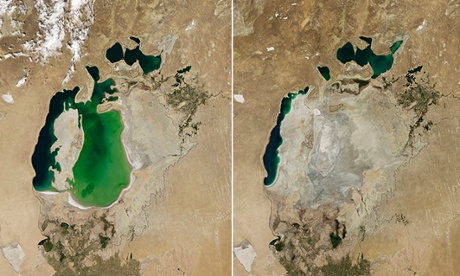This is the third time I am participating in Blog Action Day. It's great to be part of this worldwide movement, and I learn a lot too! Last year, I wrote a piece on Killer Jeans - the impact on the jean industry on the people who make them. This year's theme is Inequality.
In 2010, the world consumed 69.7 million tonnes of clothing, 47.4 million tonnes more than 10 years earlier (UNFAO). Although the per capita consumption of fibers is increasing in developing countries, "developed countries had been the major driver of growth in world fibre consumption over the past few decades." As such, the developed world's hunger for fast fashion and consuming everything to impress has left a negative impact on many parts of our Earth and its associated communities. This has created inequality ...... There are many examples, but I've just listed a few, and focused just on cotton (unsustainable cotton).
Our Actions Affect Communities
Our Actions Affect Communities
"In 2008, total cotton consumption in developed countries accounted for about 50% of world consumption with a per capita consumption of 9.5 kilograms, which was nearly 4 times the 2.4 kilograms consumed in developing countries."
World Apparel Fiber Consumption Survey, 2013
"It takes more than 20,000 litres of water to produce 1kg of cotton" WWF
In Uzbekistan (one of the largest exporters of cotton), heavy irrigation to grow the cotton industry has resulted in the drying up of the Aral Sea. What was once a busy fishing port, it is now a ship cemetery, not to mention that there is a huge impact on the ecosystem. But the human misery does not stop there. According to this report, the diversion of waters to the plantations, has raised the water table and brought all the salts the soil held to the surface. The resulting drinking water is heavily contaminated with salt as well as pesticides used in the growing cotton. It does not make the area suitable for human life, or any life for that matter.
"Cancers, lung disease and infant mortality are 30 times higher than they used to be because the drinking water is heavily polluted with salt, cotton fertilisers and pesticides."
 |
| The Aral Sea in 2000 on the left and 2014 on the right. Photograph: Atlas Photo Archive/NASA Image via The Guardian "Cotton plants are sprayed with pesticide. Many of the chemicals in these products are banned in the west, yet most Indian workers toil barefoot and without masks." The Guardian |
Do you see the inequality here? While we enjoy our purchases, others elsewhere suffer because of it. Does it have to be this way? We can make informed choices such as :
a) purchasing garments made from sustainable fibres. Sustainable brands such as People Tree and Etrican require their cotton to be sourced in a sustainable manner.
b) turning to wood fibre based garments such as rayon, viscose or modal (from sustainably certified forests), which use 15 to 35 times less water than cotton.
b) buy fewer clothes (why do we need so many, right?)
These might be a small step, but it is a step in the right direction.
Afternote: I know this industry is extremely complex. There is no single solution and no one can wave a wand and make it all go away. I understand that there are people driven by poverty to work on the cotton fields as they have no choice. Are there other ways where we can make a difference? Share here!

















Quite disturbing! Food for thought, Agy. I've been meaning to do some research to try and find where my favourite clothes are manufactured, both the fabric and the finished garments.
ReplyDelete